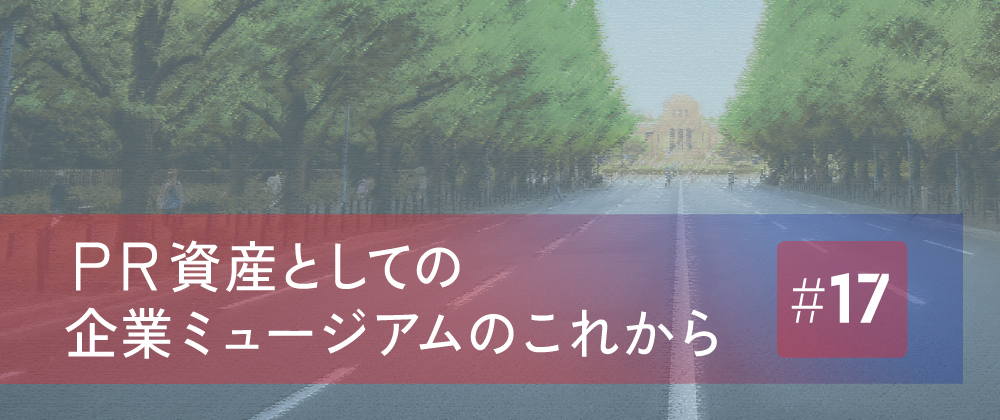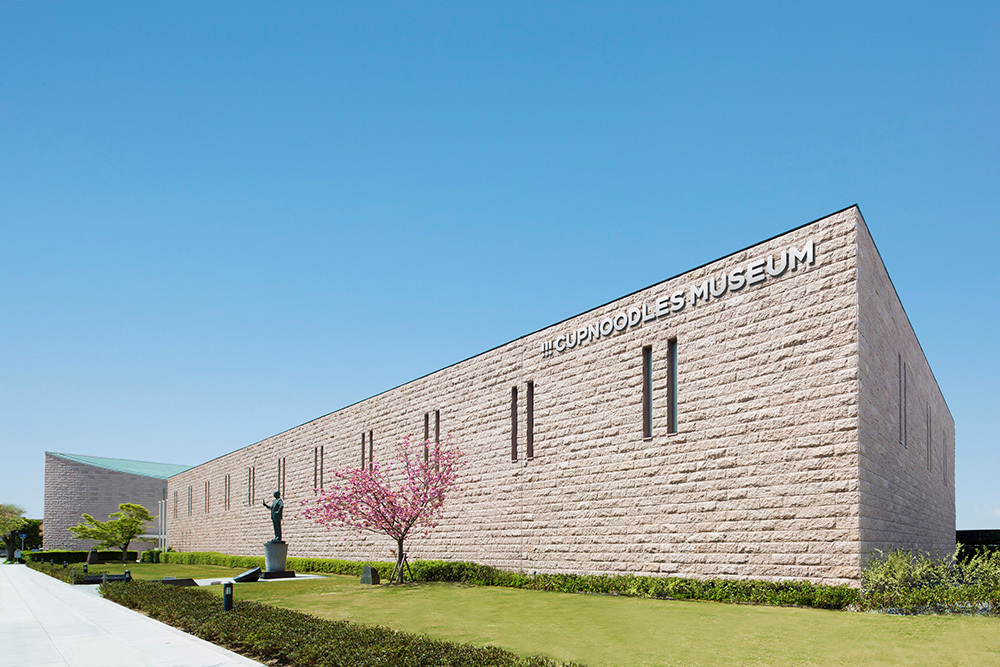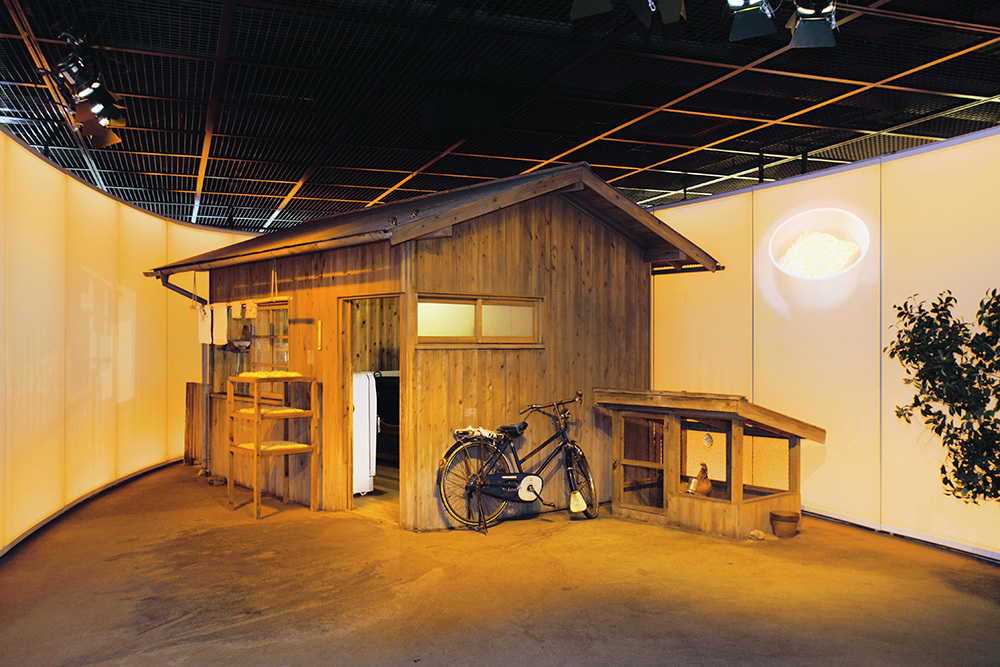Note: This website was automatically translated, so some terms or nuances may not be completely accurate.
The Cup Noodles Museum: Preserving and Communicating the Founder's Spirit

Corporate museums occupy a buffer zone spanning both the academic realm of "museums" and the business realm of "corporations." They are organizations that collaborate extensively with various corporate departments responsible for their operation, including public relations, branding, advertising, and human resources. In this series, PR professionals will introduce various museums run by corporations, exploring their roles, functions, and potential.
Momofuku Ando (hereafter referred to without honorifics), founder of Nissin Foods, invented "Chicken Ramen" and "Cup Noodle," transforming global food culture with instant ramen. To honor this great achievement, Nissin Foods Holdings and the foundation established with Momofuku Ando's personal funds (the Ando Sports and Food Culture Promotion Foundation) operate the Cup Noodle Museum Osaka Ikeda (official name: Momofuku Ando Invention Memorial Museum Osaka Ikeda). Their goal is to convey his journey and the joy of invention and discovery to the next generation. This article delves into the museum's initiatives, starting from the transmission of the founder's spirit, to build a long-term fan base.
Reporting and Text: Yasuhiro Kunimi (PR Consulting Dentsu Inc.)
An experiential food education museum standing in the birthplace of instant ramen
Ikeda City, Osaka Prefecture, home to the "Cup Noodle Museum Osaka Ikeda," is the town where Momofuku Ando, founder of Nissin Foods, invented the world's first instant ramen, "Chicken Ramen." Established in 1999, marking Nissin Foods' 40th anniversary, this experiential food education museum was founded at the birthplace to honor the founder's achievements and convey the history of instant ramen and the importance of invention and discovery to the next generation.

The museum's main target audience is children, the next generation. Since opening, visitor numbers have steadily increased, reaching over 10 million cumulative visitors as of March 2021. Approximately 910,000 people visited annually in fiscal year 2018. Although the museum temporarily closed due to the spread of COVID-19 between 2021 and 2022, it still welcomed around 210,000 visitors over those two years.
Currently occupying a vast site with a total floor area of 3,423 square meters, the museum started with less than half that size, featuring only exhibition rooms. Chicken Ramen hands-on experiences were held by reservation in a seminar room on the second floor. Expansion projects in 2004 and 2015 added permanent hands-on spaces and enriched the content.
In 2011, driven by a desire to share the founder's vision and the story of Cup Noodles with a wider audience, the "Cup Noodles Museum Yokohama" was established. Furthermore, in 2021, the "Cup Noodles Museum Hong Kong" opened, making it known to many people both domestically and internationally. As of 2021, the Yokohama museum ranked first and the Osaka Ikeda museum ranked third in Japan's corporate museum visitor count rankings (※). It can be considered Japan's most well-known corporate museum.
※Reference: "Leisure Land & Rec Park Directory 2021"
Chicken Ramen: Changing the World's Food Culture
Instant ramen was born in Japan. According to the World Ramen Association, 118.2 billion servings are now consumed globally each year. In 2005, it journeyed into space aboard the Space Shuttle, and astronaut Soichi Noguchi became the first human to eat it aboard the International Space Station, truly cementing its status as a universal food.
After the war, Japan faced severe food shortages. Starving and malnourished people collapsed and died on the streets in endless numbers. At that time, Momofuku Ando witnessed a line of people waiting in the cold under the open sky at a black market near Osaka Station, all for a single bowl of ramen. He realized that Japanese people loved noodles and that a huge demand was hidden there. About ten years later, after losing most of his fortune in a failed business venture, Ando recalled the people lining up at the ramen stalls in the black market. He resolved to develop instant ramen, something that didn't yet exist in the world, thinking, "How happy people would be if there were ramen that could be easily eaten anytime and kept on hand at home."
He began development in a makeshift research hut built in his backyard. With absolutely no experience in noodle making, Ando continued the development single-handedly, repeating the mind-numbing process of creating mountains of prototypes only to discard them. Then, one day when he was stuck on the drying method for the noodles, he saw his wife frying tempura for dinner. This inspired him to "dry the noodles by frying them in oil," leading to the creation of the "instant oil-heat drying method," the fundamental manufacturing technology for instant ramen. Development continued from there, and on August 25, 1958, the world's first instant ramen, "Chicken Ramen," was released.
What's truly fascinating is that this great invention was created using nothing more than common household cooking tools found in any home, except for a used noodle-making machine and a large wok for frying noodles.

A place to relive the joy of invention and discovery
"Invention comes from inspiration. Inspiration comes from persistence. Without persistence, there is no invention." Momofuku Ando left behind these words. From his youth, as an entrepreneur, he pursued various ventures driven by the belief: "Is there something I can do to help people?" and "Is there work that can brighten the world?" He achieved the great invention of Chicken Ramen at the age of 48, an age considered close to retirement at the time.
At its opening, it was a rare experiential museum. "Things you see are quickly forgotten. But things you experience firsthand with enjoyment stay with you forever. That's precisely why creating an experiential museum is meaningful." The strong conviction of Ando Momofuku's son, Ando Hiroki, who was then president of Nissin Foods, is reflected in the exhibits and attractions.
The Cup Noodle Museum Osaka Ikeda is a place where visitors can relive the founder's inventions and discoveries. Its content is divided into two categories: "exhibition-based" and "experience-based." Exhibits include the "Instant Ramen Tunnel," where walls are covered with approximately 800 types of Nissin Foods products, and "The Journey of Momofuku Ando," showcasing his annual New Year's messages, numerous medals, and cherished personal items. Experience-based attractions include the "Cup Noodle Drama Theater," which projects the untold story of Cup Noodle's birth onto a large screen, and the "My Cup Noodle Factory," where you can create your own one-of-a-kind Cup Noodle. In total, nearly 10 different types of content are available.
The fun isn't just for children. For example, the "Momofuku Ando and the Story of Instant Ramen" exhibit graphically introduces episodes of invention, the history of development, and the importance of intellectual property. Interspersed throughout are quotes from Momofuku, designed to resonate with business professionals and older adults. Among Nissin Foods Group employees, the phrase "Turn work into play" is particularly popular.

Content Design to Pass on the Venture Spirit
Particularly noteworthy is the research hut where "Chicken Ramen" was born, one of the museum's core concepts. This hut is deliberately recreated in a deliberately "rudimentary" state to authentically convey the origins of its development. It embodies the powerful message that what truly matters isn't equipment or money, but the passion and tenacity to realize an idea.

For the recreation, rough sketches were created based on interviews with Momofuku Ando. They meticulously focused on every detail, using not only the cooking tools but also items like the water faucet that were actually used in Ikeda City at the time. Before the grand opening, local residents were invited. Many reminisced about the era, and some even recalled tasting the Chicken Ramen prototype.
The "Chicken Ramen Factory" is another essential attraction. Visitors learn about the origins of development and philosophy in the research hut, then enjoy experiencing the invention process firsthand at the Chicken Ramen Factory.

The Chicken Ramen Factory was launched after months of simulation and repeated trial and error to determine the optimal process and time allocation for children to enjoy making it. Particular emphasis was placed on "quality" and "safety," with numerous prototypes created to achieve the same level as the product sold in stores.
While offering the entertainment value of an "experiential" activity, the museum's content is designed not just for simple product understanding. It incorporates mechanisms for learning about the creative thinking and entrepreneurial spirit of the founder hidden behind the scenes.
A Cycle for Building Fans, Passing on to the Next Generation
What significance and role does a corporate museum hold for the Nissin Foods Group? We spoke with Katsuhiko Kiyofuji, Director of the Cup Noodle Museum.
"First and foremost, it's about letting the children who will lead the next generation experience the 'joy of invention and discovery'. Internally, it serves as a place to pass down the founder's vision. We often say it provides foundational experiences. For children, the first things they encounter become deeply ingrained in their bodies and memories, leaving lasting impressions. If that first instant noodle experience was Chicken Ramen or Cup Noodles, we can expect it to foster long-term brand loyalty."

Memories etched through experience remain even into adulthood. And by bringing their own children back 10 or 20 years later, they become fans of Nissin Foods across generations. The museum serves this cyclical function of building long-term fans. Mr. Kiyofuji also states it's a place to convey understanding and reassurance about the instant noodle industry and the food itself. "Beyond the social learning aspect of seeing instant noodle production, it helps visitors understand the industry's structure and fundamentals. Learning about ingredients and products also fosters safety awareness."
A place to return to the founding spirit
While the museum communicates messages externally, it also serves as an internal communication platform to pass on this vision to employees.
"The Nissin Foods Group values the founding spirit. This spirit isn't just an old tale. It's a current, ongoing action guideline for employees to unite and evolve the company. We continuously inherit what the founder intended to offer the world and the joy he sought to bring to people when he started the company," says Kiyofuji.
In recent years, purpose-driven management has gained attention, accelerating efforts to clarify a company's raison d'être. The Nissin Foods Group, having established mechanisms back then to ensure Momofuku Ando's spirit remains unbroken and continuously enhancing employee engagement, can be considered a pioneer in this regard.
For example, as part of employee training, staff sometimes interact with visitors at the museum. By explaining the development process, the founder's vision, and what instant ramen represents to visitors, they deepen their understanding of the founding spirit and the company's brand. When numbers are large, they reportedly split participants between Osaka Ikeda and Yokohama. Furthermore, with an increase in mid-career hires in recent years, the museum also serves as a place to educate and reaffirm the founder's philosophy by providing regular training opportunities for employees who have not yet visited.
Other unique initiatives include an event for Chicken Ramen's 60th anniversary, where all employees took turns visiting both Osaka Ikeda and Yokohama to handcraft Chicken Ramen. They also created an original board game to help employees learn and internalize the founder's quotes. "Building it was a significant investment, but having the museum means it's not just for external visitors; it's also an important location for our own employees to learn about the founding spirit."
An Important Tourism Resource for Ikeda City
The Cup Noodles Museum Osaka Ikeda also serves as a vital tourism resource for the local city of Ikeda. Key examples include its use as a stamp rally spot for tours within Ikeda City and the appointment of "Hiyoko-chan" as the city's first tourism ambassador, marking the first time a corporate mascot held such a role.
Furthermore, Ikeda City is promoting community revitalization through Chicken Ramen, launching the "Osaka Ikeda Chicken Chicken Exploration Team" project. This initiative began not through an offer from Nissin Foods, but when local restaurant owners voluntarily gathered and started offering creative menus using Chicken Ramen. Today, around 50 restaurants in the city, primarily centered around the stations of Ikeda Station and Ishibashi-Osaka University Station on the Hankyu Takarazuka Main Line, offer various creative Chicken Ramen dishes.
Furthermore, the museum is frequently included as a tourist spot in Osaka and regional tours, attracting many international visitors. In years when attendance exceeded one million visitors, foreigners reportedly accounted for 15-20% of the total. In recent years, the museum has also provided support through an app offering audio guides in three languages: Korean, Chinese, and English.
After the interview
A company's raison d'être resides in its "founder's spirit." As Mr. Kiyofuji states, this founder's spirit is not a thing of the past; it is an ever-present, ongoing guiding principle for employees to strive toward. How this spirit is passed down to prevent it from fading varies from company to company.
Visiting the museum, one could sense Mr. Momofuku Ando's strong convictions in every detail. It's not just because he achieved a great invention, but also because of his never-give-up venture spirit that continues to be cherished not only by visitors, but also by employees and the local community.
[Editor's Note] (From the Web Dentsu Inc. Editorial Department)
Offering customers "experiences" is an old yet new PR tactic. "Taste tests," "try-ons," "free samples," "one-month free subscriptions"... the list is endless. However, while many of these aim to boost sales directly and immediately, the Cup Noodles Museum focuses on building fans with a medium-to-long-term vision. It essentially provides a place for "creating memories."
Visitors can learn about food alongside creating enjoyable memories. They can connect with the values and spirit of the Nissin Foods company and brand. When they have children or grandchildren in the future, they might be inspired to revisit the museum, drawn back by their own fond memories. The museum is packed with such thoughtful mechanisms.
As digital technology advances, "real experiences" inevitably diminish. Yet, what truly resonates deep within people's hearts is the "emotion" felt through experiencing something real. Looking back, the "Cup Noodles" product itself began with a "new experience" – having people eat it with a fork on Ginza's pedestrian-only street.
Was this article helpful?
Newsletter registration is here
We select and publish important news every day
For inquiries about this article
Back Numbers
Author

Kunimi Yasuhiro
PR Consulting Dentsu Inc.
Information Distribution Design Bureau Digital Activation Department
Yasuhiro Kunimi Information Circulation Design Bureau / Digital Activation Department After graduating from university, he worked at a publishing company editing teen magazines, handling fashion and culture publications for young audiences. He then gained experience at an IT advertising agency managing fan clubs for idol IPs, operating YouTube channels, and producing social media content. After joining PR Consulting Dentsu Inc. in 2018, he worked on content production for the business inspiration media AMP and engaged in sales activities.



